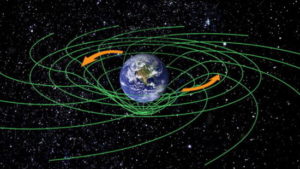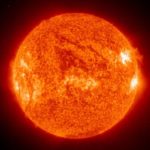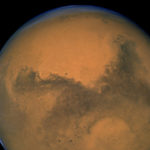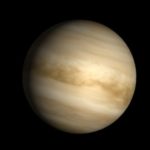25 interesting facts about gravity
 Gravity, or gravity, is still one of the mysteries of the universe. Scientists know how the ode acts, but this knowledge accumulated by humanity is limited. We do not know how to control gravity, nor why it arises, and no one can guarantee that our scientific knowledge is not wrong.
Gravity, or gravity, is still one of the mysteries of the universe. Scientists know how the ode acts, but this knowledge accumulated by humanity is limited. We do not know how to control gravity, nor why it arises, and no one can guarantee that our scientific knowledge is not wrong.
It is included in the list of four fundamental forces determining the interaction of all objects in the Universe, while being the weakest of them.
In fact, gravity is not so strong. Some small magnet, clinging to a metal ceiling, easily overcomes it.
Scientists believe that the boundaries of the propagation of gravity do not exist, but it weakens with distance, and at a certain distance it becomes negligible.
In space there are gravitational lenses – areas with distorted, “condensed” gravity. Nobody still knows why they arise.
There is no connection between gravity and the weight of objects. If you drop a couple of objects of the same shape but different in weight, they will fall with the same acceleration.
To overcome the force of gravity of the Earth, a rocket needs to accelerate to 11.2 kilometers per second.
A neutron star the size of the Sun would have such powerful gravity that on its surface there could be no elevations higher than 5 millimeters in height, otherwise they would collapse under their own mass.
In the absence of gravity, the flame around a burning match or candle spreads in all directions, and does not stretch upward.
Gravity cannot be completely absent. Even in outer space, for example, in the Earth’s orbit, astronauts living in zero gravity are affected by microgravity of the Earth, the Sun, the Milky Way and other celestial bodies.
If gravity is absent, carbonated drinks can be life-threatening, as the gases contained in them will not be distributed correctly throughout the body.
In the solar system, there are two pairs of planets with almost the same gravity. This is a pair of Earth and Venus, as well as Mars and Mercury.
The lunar gravity is six times weaker than the earth, but objects on the surface of the moon fall faster, because there is no atmospheric resistance.
The higher the gravity on the planet, the lower the maximum height that mountains can reach on it. On Earth, for example, the maximum estimated height of the mountain from the bottom to the top can reach about 15 kilometers.
Due to lower gravity, people who grew up, for example, on Mars, will be higher than the inhabitants of the Earth, but at the same time they will be inferior to them in physical strength.
Purely theoretically, a person can adapt to life on celestial bodies, whose gravity differs from the Earth’s no more than about three times.
Black holes have such strong gravity that it attracts even light.
In the absence of gravity, spiders weave a spherical web. This was confirmed by a series of experiments aboard the International Space Station.
Astrophysicists claim that in the center of our galaxy is a supermassive black hole with a mass of about 3,000,000 times the mass of the Sun. It has such powerful gravity that the arms of the Milky Way revolve around it, like the planets of the solar system revolve around the Sun.
A number of bacteria in the absence of gravity becomes much more dangerous.
Due to the fact that the Earth does not have an ideal ball shape, at the poles the force of gravity is slightly stronger than at the equator.
We will not confuse weight and mass. Mass is an irrelevant concept, but weight depends on the gravitational field of which celestial body the object is located. On Mars, for example, everything weighs about 60% less than on Earth.
Isaac Newton was the first scientist to formulate the law of gravity.
In the absence of gravity, the bones of the human body lose up to one percent of calcium per month, and after a few percent loss they become brittle.
The word “gravity” comes from the Latin “gravitas”, which means “gravity”.
After returning from orbit, the astronauts are forced to re-get used to gravity. During the time spent on the expedition, they often manage to forget that the objects have weight, and fall if they are released.



























